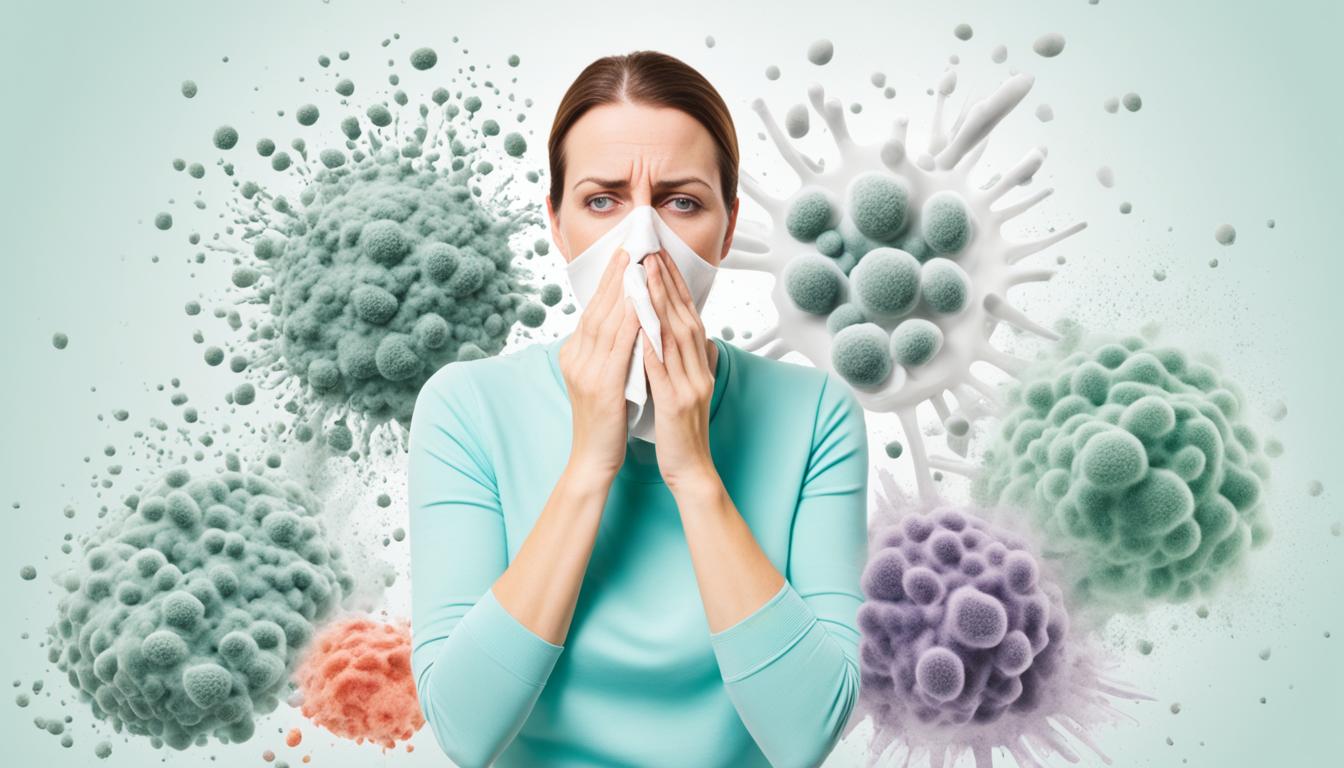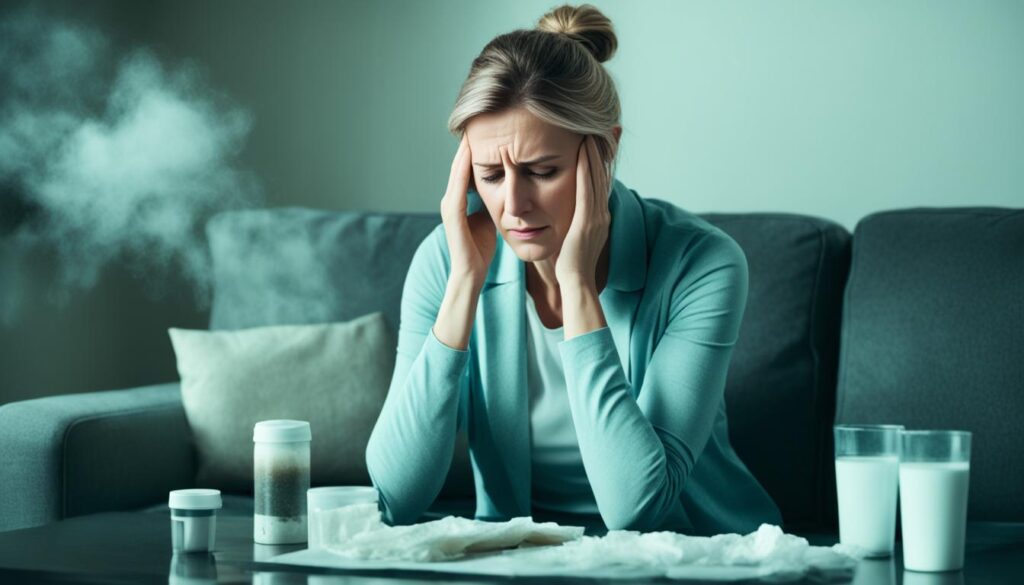
Mold Exposure Symptoms in Adults Explained
When it comes to mold exposure, adults need to be aware of the potential health risks and the symptoms that may arise. Mold, a type of fungus that thrives in damp and dark environments, can release spores into the air. These spores, when inhaled or come into contact with the skin, can cause various health issues.
In this section, we will delve into the symptoms that adults may experience when exposed to mold. By understanding these symptoms, individuals can take appropriate action to address any potential health concerns.
Key Takeaways:
- Symptoms of mold exposure in adults can vary depending on the individual, type of mold, and extent of exposure.
- Common symptoms may include respiratory issues such as coughing, wheezing, shortness of breath, and chest tightness.
- Allergic reactions such as nasal congestion, sneezing, watery eyes, and skin rashes are also possible.
- Recognizing these symptoms is crucial to identifying mold exposure as a potential cause.
- Prompt action is necessary to address any health risks associated with mold exposure.
Common Symptoms of Mold Exposure in Adults
Mold exposure can have a range of symptoms in adults, and it’s important to be aware of the common signs that may indicate exposure. These symptoms can vary depending on the individual’s sensitivity, the type of mold, and the duration and extent of exposure. Recognizing these symptoms is crucial for taking appropriate measures to mitigate potential health risks.
Here are some common symptoms that adults may experience as a result of mold exposure:
- Allergic Reactions: Mold can trigger allergic reactions in susceptible individuals. Symptoms may include nasal congestion, sneezing, itchy or watery eyes, and skin rashes.
- Respiratory Issues: Mold inhalation can lead to respiratory problems, such as coughing, wheezing, chest tightness, and shortness of breath. Individuals with asthma or other respiratory conditions may experience worsening of their symptoms.
- Headaches and Fatigue: Chronic exposure to mold can cause persistent headaches and fatigue. These symptoms can significantly impact an individual’s daily life and overall well-being.
- Sinus Problems: Mold spores can irritate the sinuses, leading to sinus congestion, pressure, and sinus infections.
- Neurological Symptoms: In some cases, mold exposure may cause neurological symptoms, such as difficulty concentrating, memory problems, dizziness, and confusion.
- Skin Irritation: Direct contact with mold or mold-infested materials can result in skin irritation, including itching, redness, and rashes.
It is worth noting that these symptoms may not necessarily be exclusive to mold exposure and can overlap with other health conditions. Therefore, it is essential to consult a healthcare professional for an accurate diagnosis and appropriate treatment.

Respiratory and Allergic Reactions
Exposure to mold can lead to a variety of respiratory issues and allergic reactions in adults. These reactions can manifest in different ways depending on the individual and the level of exposure. It is crucial to recognize these symptoms to take appropriate steps for your health and well-being.
One common respiratory reaction to mold exposure is coughing. This persistent cough may be accompanied by wheezing or chest tightness, making it challenging to breathe comfortably. Additionally, individuals may experience shortness of breath, feeling as though the air is not reaching their lungs fully. Identifying these respiratory symptoms is crucial in pinpointing the cause of discomfort.
Alongside respiratory issues, allergic reactions are also prevalent among those exposed to mold. Nasal congestion is a common symptom, leading to difficulties in breathing through the nose. Sneezing bouts may become more frequent, and individuals may experience watery eyes or itchiness. Some individuals may even develop skin rashes upon exposure to mold, further indicating an allergic reaction.
Understanding the respiratory and allergic reactions that can occur due to mold exposure is vital. If you or someone you know is experiencing any of these symptoms, it is essential to consult with a healthcare professional. Recognizing and addressing these issues promptly can help prevent further complications and improve overall well-being.




